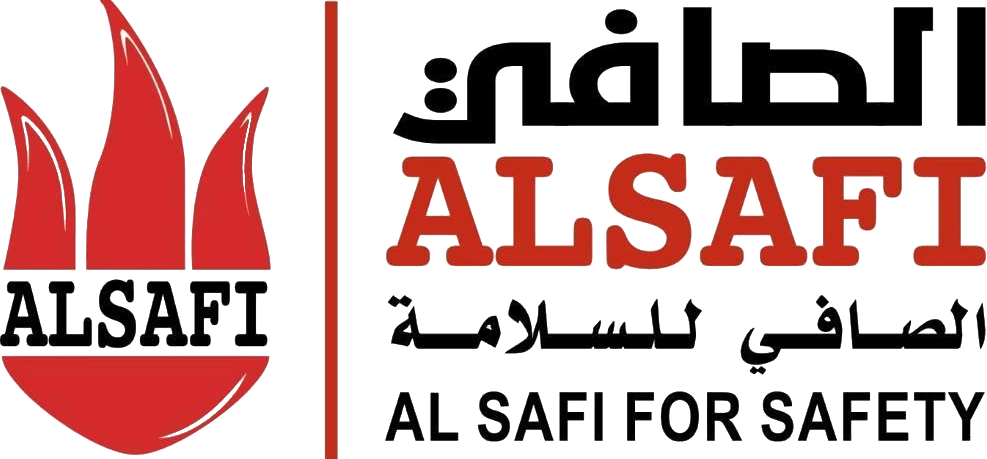Worksite safety procedures | Prevention to protect workers

Workplace safety procedures are an essential part of a work environment, aiming to protect employees from accidents and injuries that may occur while performing their duties. These procedures are necessary to create a safe, hazard-free workplace, whether in factories, construction sites, or administrative offices. In this article, we will explain the most important procedures to follow and the best ways to prevent occupational hazards.
Before reviewing workplace safety rules, let’s explain the ways to prevent occupational hazards. Prevention includes a set of measures and procedures designed to reduce potential risks at work. Below is a detailed explanation of the most important methods:
-
Use of Safety Equipment:
Employees must wear appropriate personal protective equipment (PPE) for the workplace, such as helmets to protect the head from impacts, gloves for handling chemicals or sharp objects, safety goggles to shield the eyes from flying debris, and safety shoes with strong, slip-resistant soles. Compliance with safety equipment usage is essential to protect employees from injuries.
-
Training on Safety Basics:
Regular training for employees is essential to ensure their safety. This training covers handling potential hazards, proper use of safety tools, and personal protection procedures.
It also enhances employees’ ability to act quickly and effectively in emergencies, reducing the likelihood of accidents.
-
Regular Equipment Inspections:
Regular inspection and maintenance of equipment and machinery are necessary to ensure safety and usability. Routine checks help detect malfunctions before they cause accidents or injuries and include replacing damaged parts, cleaning equipment, and verifying operational readiness.
-
Providing Safety Signs:
Clear warning signs should be placed in hazardous areas within the workplace. These signs highlight risk zones, such as areas with dangerous machinery or work at heights.
Signs guide and alert employees to potential hazards, increasing awareness and reducing exposure risks.
-
Emergency and Evacuation Procedures:
An effective emergency plan should include clear procedures for safely evacuating employees in case of fire, chemical spills, or other emergencies. This involves preparing evacuation routes, designating assembly points, and training employees on organized evacuation and proper emergency behavior.
Read about: Safety Certificate
Workplace Safety Procedures:
Here are some safety measures you should follow to protect yourself from work hazards:
-
Proper Use of Tools and Equipment:
Ensure tools and equipment are used according to approved instructions to avoid accidents. For example, use hand tools correctly, maintain them in good condition, operate machines safely, and ensure protective measures like guards and shields are in place.
-
Wearing Personal Protective Equipment (PPE):
Wearing PPE is essential to reduce risks. For instance, helmets protect the head from falls or impacts, gloves protect hands from cuts or chemicals, and safety shoes with solid soles protect feet from heavy objects or hazardous surfaces.
-
Avoid Working in Hazardous Conditions:
Do not work at heights without proper safety measures such as harnesses or secured systems. When handling chemicals, wear protective clothing and masks to prevent exposure. Avoid working in extreme weather conditions unless fully equipped.
-
Stay Alert:
Be aware of your surroundings, and notice any changes that could pose a risk, such as damaged equipment, exposed wiring, or leaks. Vigilance reduces accident risks and allows for rapid preventive action.
-
Report Hazards:
If you identify any potential hazard, report it immediately to the responsible authority at the site, such as the safety supervisor or management team, to ensure quick action and prevent risks to yourself or colleagues.
Workplace Safety and Health in Factories
Occupational safety and health in factories is fundamental for a safe and productive environment. Preventing workplace accidents not only protects employees but also ensures operational continuity and reduces losses.
Safety in factories is crucial to minimize risks related to heavy machinery, chemicals, and operational conditions. Clear daily safety guidelines must be followed, including:
- Ensure all equipment and machinery are regularly maintained to prevent sudden failures.
- Provide PPE such as helmets, gloves, safety shoes, and protective glasses according to the work type.
- Train employees on emergency evacuation procedures, fire handling, and chemical spill management.
- Designate clear movement paths and mark hazardous areas with warning signs.
- Ensure proper ventilation, especially in workplaces with fumes or gases.
- Implement continuous awareness programs to improve occupational safety and health knowledge.
Requirements for Workplace Safety and Health
Workplace safety and health requirements include measures and policies to protect employees and ensure safety effectively, including:
-
Risk Assessment:
Identify potential hazards in the workplace, such as mechanical, electrical, or chemical risks, and evaluate their level of danger. Then, develop preventive plans to reduce these risks, providing a safe and secure work environment.
-
Continuous Training:
Employees must receive regular training on safety procedures, including handling potential hazards, using PPE correctly, and responding effectively during emergencies. Continuous training enhances awareness and the ability to act safely and quickly.
-
Provision of Necessary Equipment:
All necessary safety equipment should be available, such as fire extinguishers, first aid kits, and PPE like gloves, helmets, and masks. Easy access ensures a faster response and reduces accident likelihood.
-
Regular Inspections:
Regular inspections verify compliance with safety standards, including equipment condition, environmental hazards like exposed wiring or slippery surfaces, and identifying safety system weaknesses. Inspections help detect problems before they cause injuries.
-
Implement Emergency Procedures:
Prepare a clear emergency plan including evacuation procedures and incident management, such as fires or chemical spills. Ensure all employees know the plan and receive regular practical training. This minimizes injuries and ensures safe evacuation during emergencies.
For specialized assistance with workplace safety procedures, contact Al Safi Safety Systems.
In conclusion, workplace safety procedures are essential for protecting employees and minimizing risks. Using PPE, obtaining occupational safety certificates, and collaborating with certified companies like Al Safi ensures a safe and efficient work environment.
Frequently Asked Questions About Workplace Safety
How can workplace safety procedures be improved?
By providing continuous training, updating equipment, and effectively implementing emergency plans.
Are employers required to provide safety training?
Yes, employers must provide training sessions to educate employees on safety procedures.
What are the economic benefits of implementing safety procedures?
Reducing costs from accidents, improving productivity, and minimizing time and resource losses.



